What are Summer Teacher Tours?

The Minnesota Agriculture in the Classroom Program (MAITC) is excited to offer a unique summer professional development opportunity for K-12 educators and industry professionals. Our Summer Teacher Tours allow educators to observe and experience current agricultural production, processing and distribution techniques, as well as exposure to a wealth of standards-based, agriculture themed lesson plans and resources. Participants will network and share how they intend to use these experiences and resources to integrate agriculture into their curricula to improve student achievement by applying authentic agricultural examples to teach core curriculum concepts in science, social studies, language arts, math and nutrition.
Additional 2022 Teacher Tours
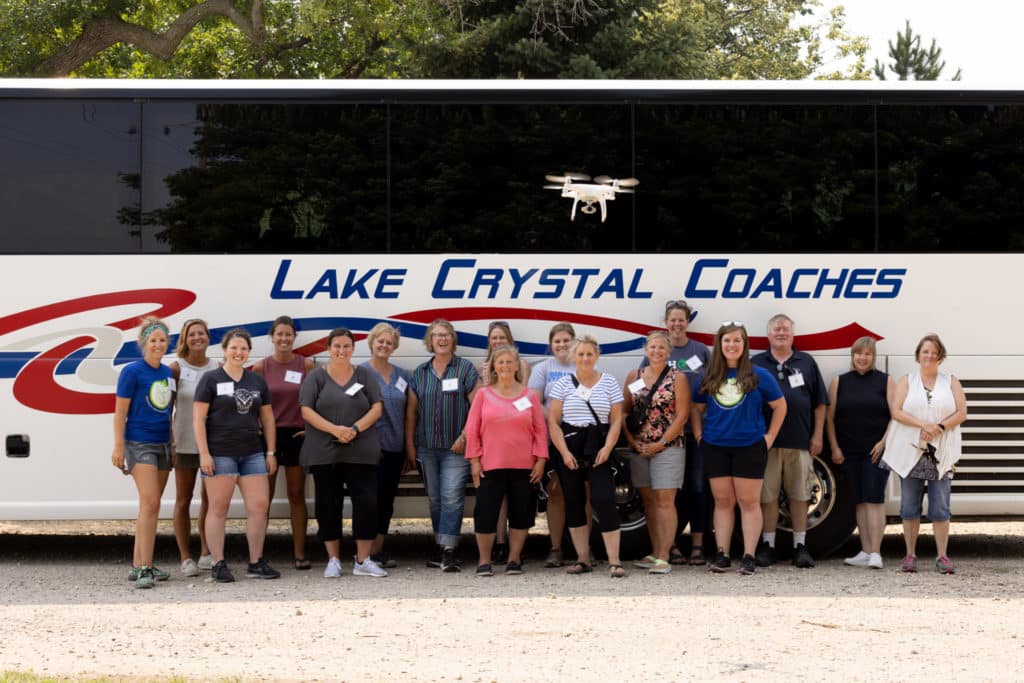
Featured Stops on This Tour
Forest Lawn Holsteins
Learn about the Swenson Family’s registered Holstein herd and how their farm has embraced technology to continue to improve their farm. While touring Forest-Lawn Holsteins, educators learned how their robotic milking system fosters animal care while improving the efficiency of their operation.
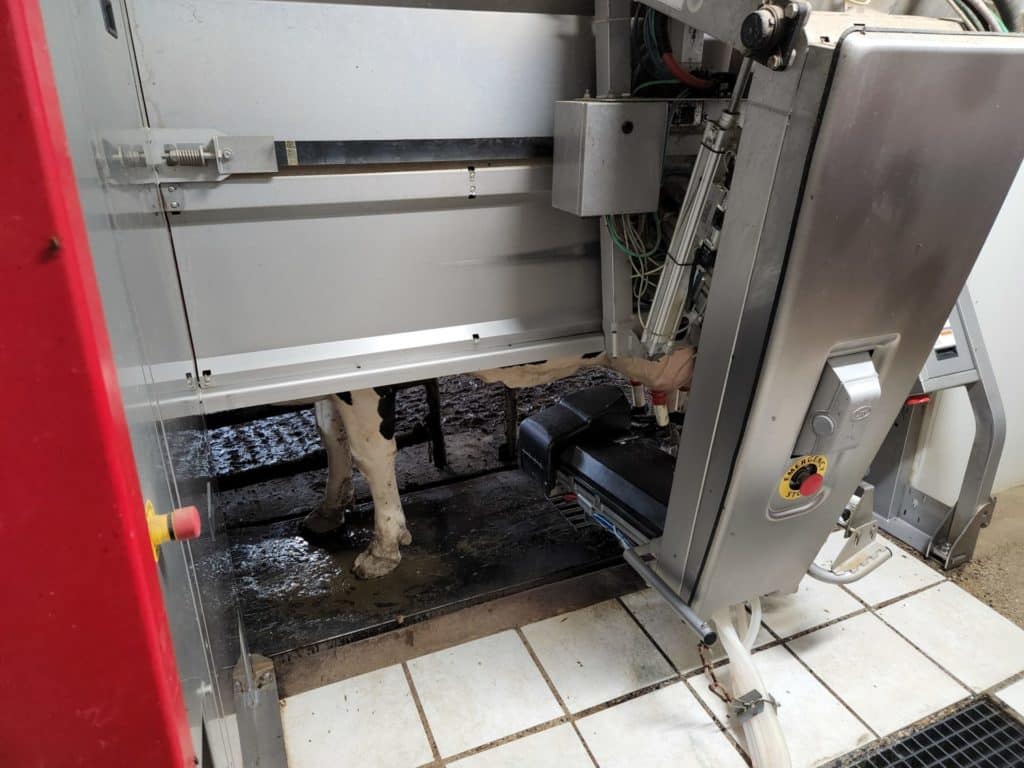
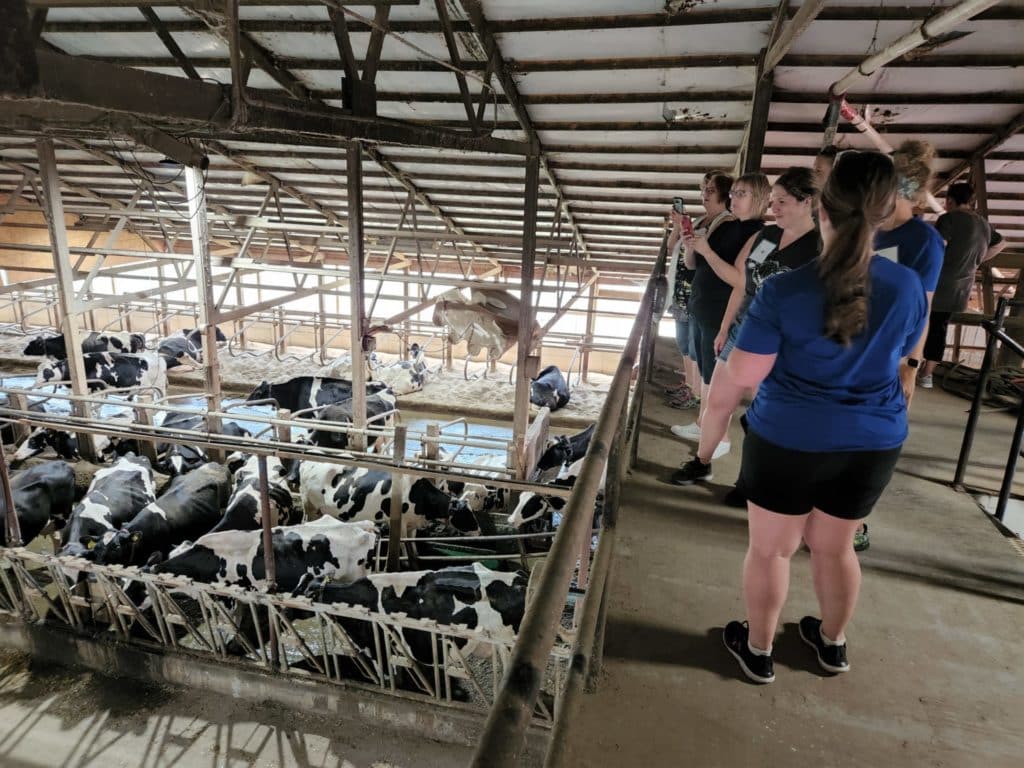
Winfield United/Answer Plot
Educators explored biotechnology and learned about how it has improved overall production while simultaneously promoting sustainability in farming practices.
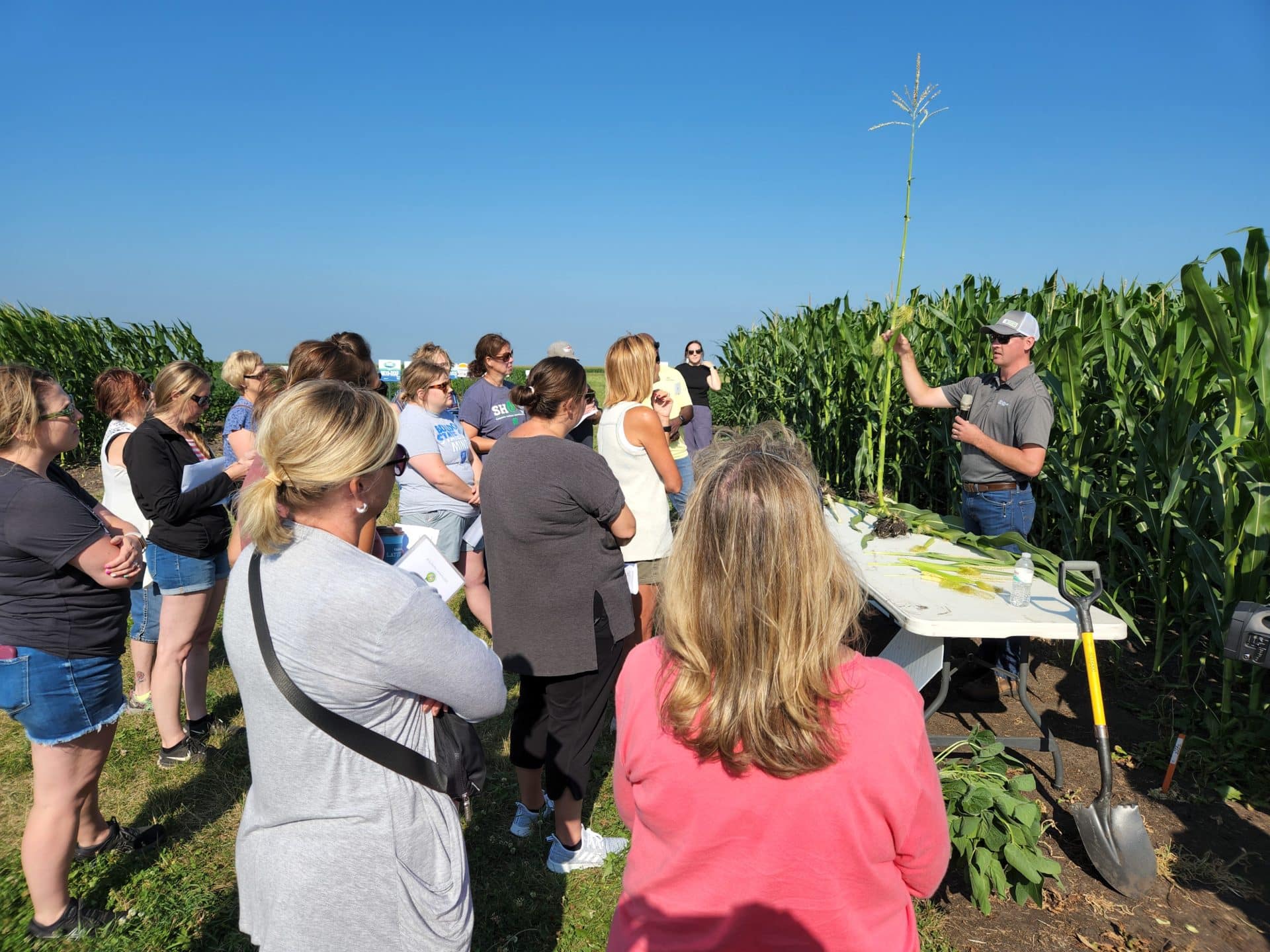
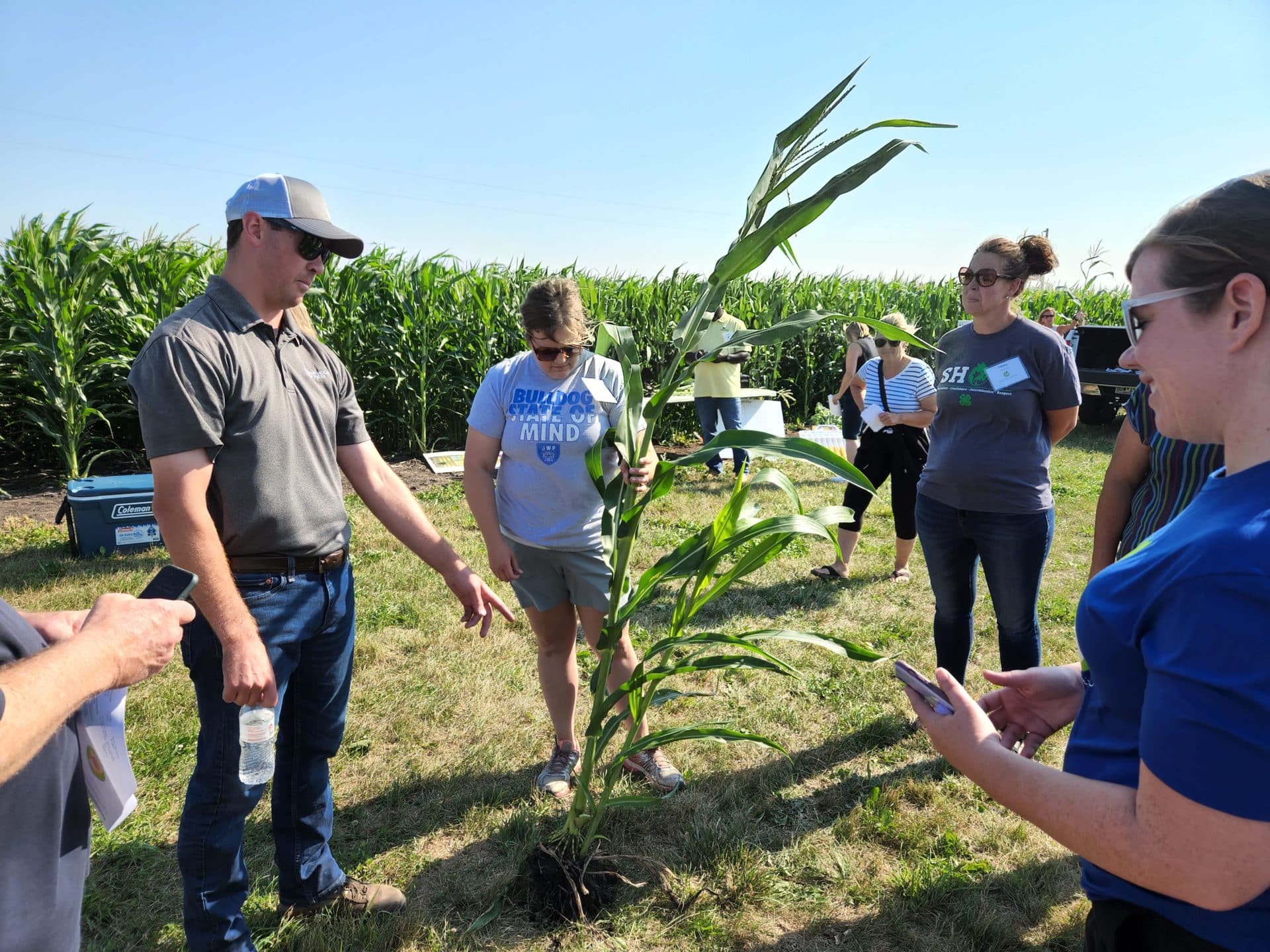
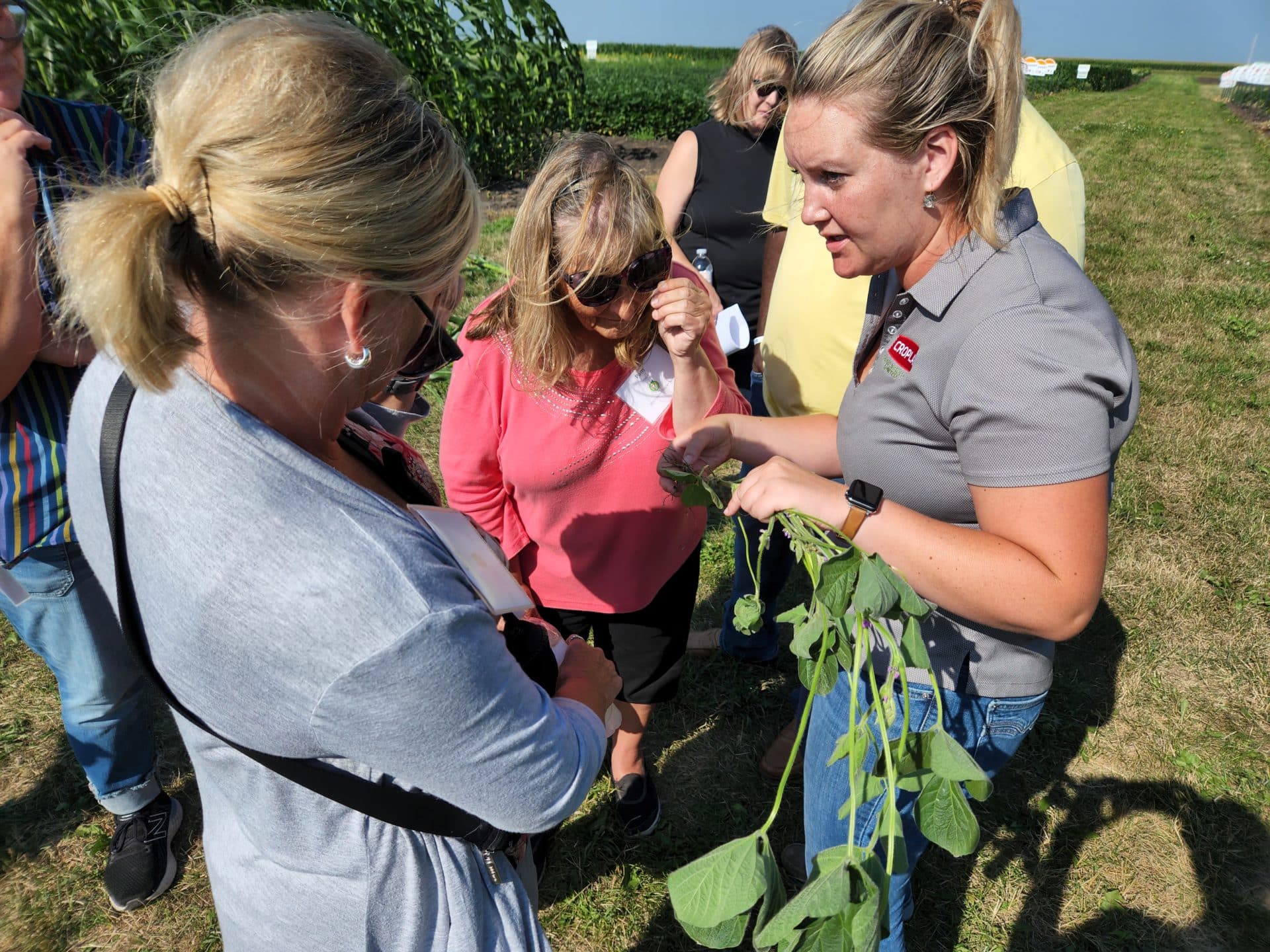
Ponwith Farms
Teacher tour attendees explored how advancements in electronic and data tracking technology has changed the way in which row crop farmers make critical decisions on their farms. They even had the opportunity to try out flying a drone!
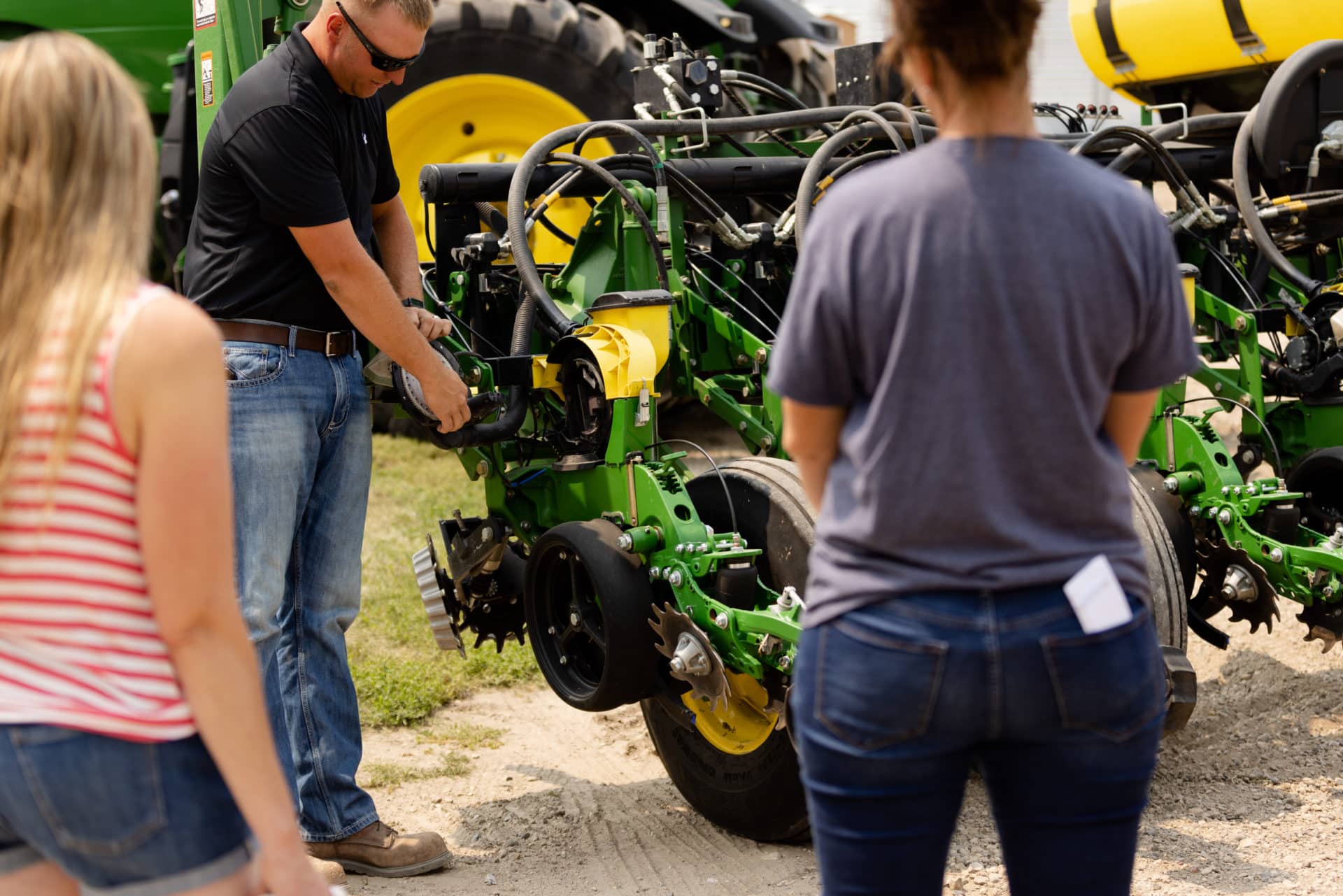
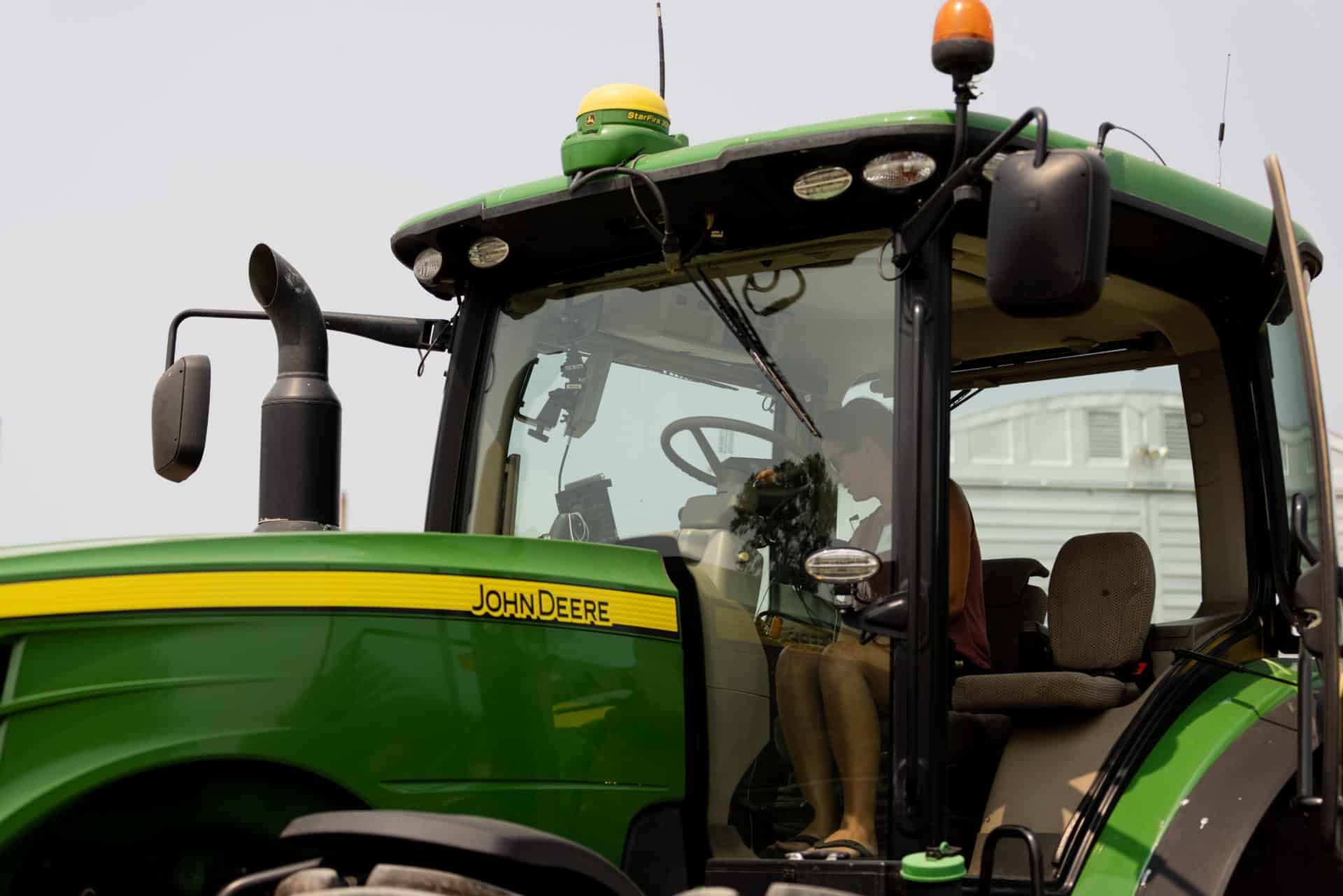

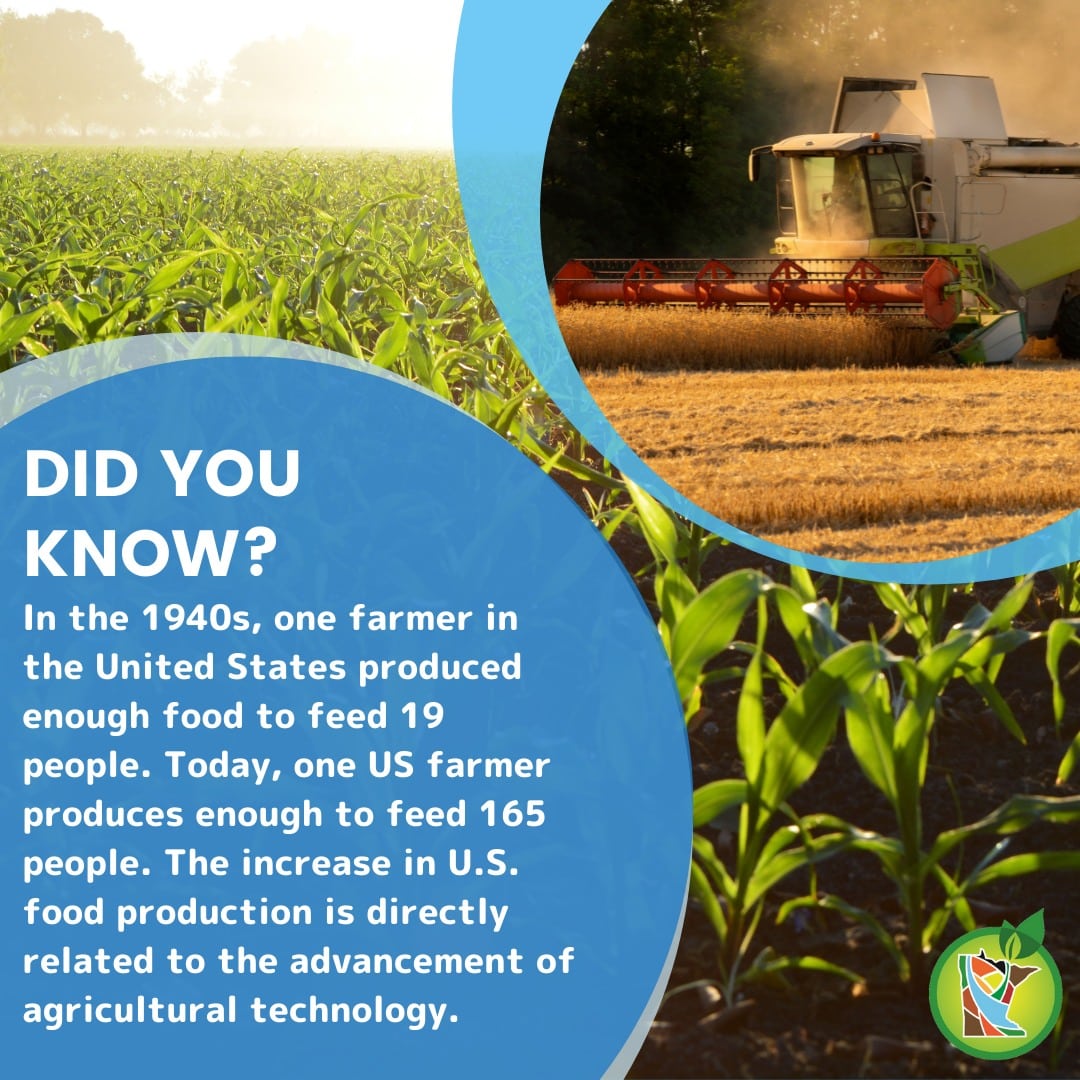
Curriculum Connections
The advancement of technology has taken agriculture to new levels. During the High Tech Farming teacher tour, educators learned how a robotic milking system and drones have improved efficiency and sustainability in farming practices.
Head over to our curriculum matrix to find the high tech farming lesson plan.
K-12 Lesson Connections
Students explore the wide scope of agriculture, identify the variety of agricultural products they use in their daily lives, and discuss the difference between needs and wants.
A Day without Agriculture Lesson Plan
State Standards for Minnesota:
Kindergarten: Economics
0.2.1.1.1 - Distinguish between individual needs (conditions necessary to survive) and individual wants (conditions desired to be happy). For example: Needs—to be fed, to be free from thirst, to be sheltered. Wants—to be entertained, to be famous, to be strong, to be helpful to others.
0.2.1.1.2 - Identify goods and services that could satisfy a specific need or want. For example: The need to be free from thirst could be satisfied by water, milk or orange juice. The desire (want) to be entertained could be satisfied by a toy, an amusement park ride or watching a movie.
1st Grade: Economics
1.2.1.1.1 - Describe some costs and benefits of alternative choices made by families.
Students investigate the sources of different foods by differentiating between foods originating from plants and foods originating from animals.
Animal or Plant? Lesson Plan
State Standards for Minnesota:
Kindergarten - Life Science
0.4.1.1.1 - Observe and compare plants and animals.
1st Grade: Nature of Science and Engineering
1.1.1.1.1 - When asked "How do You Know?", students support their answer with observations. For example: Use observations to tell why a squirrel is a living thing.
1st Grade: Life Science
1.4.2.1.1 - Recognize that animals need space, water, food, shelter and air.
2nd Grade: Life Science
2.4.2.1.1 - Recognize that plants need space, water, nutrients and air, and that they fulfill these needs in different ways.
Students explore the wide scope of agriculture, identify the variety of agricultural products they use in their daily lives, and discuss the difference between needs and wants.
A Day without Agriculture Lesson Plan
Agricultural Literacy Outcomes: Culture, Society, Economy & Geography
- Discover that there are many jobs in agriculture (T5.3-5.b)
- Explain the value of agriculture and how it is important in daily life. (T5.3-5.d)
Food, Health, and Lifestyle
- Identify food sources of required food nutrients (T3.3-5.g)
Students explore breed characteristics and countries of origin for five different breeds of dairy cattle and discover why dairy farmers choose individual breeds for specific purposes.
Cowabunga: All About Dairy Breeds Lesson Plan
State Standards for Minnesota
3rd Grade: Geography
3.3.1.1.1 - Use maps and concepts of location (relative location words and cardinal and intermediate directions) to describe places in one’s community, the state of Minnesota, the United States or the world. For example: Relative location words— close to, above, bordering. Description using relative location words—"Our school is across from the post office." Description using cardinal directions— "Mexico is south of the United States." Description using intermediate directions—“Hawaii is southwest of the continental United States.”
4th Grade: Geography
4.3.4.10.2 - Analyze the impact of geographic factors on the development of modern agricultural regions in Minnesota and the United States. For example: Agricultural regions—"Corn Belt," "Dairy Belt," crop regions.
Students explore the process of genetic engineering and discover the ten genetically modified crops approved in the United States.
Do You Know GMO? Lesson Plan
Agricultural Literacy Outcomes: Science, Technology, Engineering & Math
- Provide examples of science being applied in farming for food, clothing, and shelter products (T4.3-5.d)
- Describe how technology helps farmers/ranchers increase their outputs (crop and livestock yields) with fewer inputs (less water, fertilizer, and land) while using the same amount of space (T4.3-5.b)
- Identify examples of how the knowledge of inherited traits is applied to farmed plants and animals in order to meet specific objectives (i.e., increased yields, better nutrition, etc.) (T4.3-5.c)
Students discover the science behind how a drone works, explore how drones are used in agriculture, and program and operate a drone for the purpose of surveying a field.
Drones in High Tech Lesson Plan
Agricultural Literacy Outcomes: Science, Technology, Engineering & Math
- Compare simple tools to complex modern machines used in agricultural systems to improve efficiency and reduce labor (T4.3-5.a)
- Provide examples of science being applied in farming for food, clothing, and shelter products (T4.3-5.d)
- Describe how technology helps farmers/ranchers increase their outputs (crop and livestock yields) with fewer inputs (less water, fertilizer, and land) while using the same amount of space (T4.3-5.b)
This activity directs students in performing an experiment measuring the growth of beans using too much fertilizer, too little fertilizer, and the right balance of fertilizer. Students will learn how and why farmers use the correct amount and type of fertilizer to grow crops used for our food and fiber.
Too Much of a Good Thing Lesson Plan
Students will identify technologies that have changed the way humans affect the inheritance of desired traits in organisms; compare and contrast selective breeding methods to genetic engineering techniques; and analyze data to determine the best solution for cultivating selected desired traits in organisms.
A Recipe for Genetics: Selective Breeding & Transgenics Lesson Plan
Agricultural Literacy Outcomes: Science, Technology, Engineering & Math
- Discuss how technology has changed over time to help farmers/ranchers provide more food to more people (T4.6-8.d)
- Describe the process of development from hunting and gathering to farming (T4.6-8.c)
- Provide examples of science and technology used in agricultural systems (e.g., GPS, artificial insemination, biotechnology, soil testing, ethanol production, etc.); explain how they meet our basic needs, and detail their social, economic, and environmental impacts (T4.6-8.i)
- Describe how biological processes influence and are leveraged in agricultural production and processing (e.g., photosynthesis, fermentation, cell division, heredity/genetics, nitrogen fixation) (T4.6-8.b)
In this lesson, students will complete monohybrid and dihybrid Punnett squares in preparation for taking on a challenge to breed cotton plants that produce naturally blue colored cotton.
Applying Hereditary Concepts Lesson Plan
Agricultural Literacy Outcomes: Science, Technology, Engineering & Math
- Describe how biological processes influence and are leveraged in agricultural production and processing (e.g., photosynthesis, fermentation, cell division, heredity/genetics, nitrogen fixation) (T4.6-8.b)
In this lesson, students will gain background knowledge of the nutrient requirements of plants, how those nutrients are obtained by the plant, what farmers must do if the nutrients are not available in soils, and current issues related to agricultural production.
Digging into Nutrients Lesson Plan
In addition to selective breeding, genetic engineering tools such as transgenics and CRISPR gene editing can be used by plant breeders to solve agricultural challenges. Plants can be engineered to be more nutritious, more resistant to pests, drought tolerant, etc. This activity challenges students to match several crops and the challenges faced in growing them to potential solutions that could be reached with genetic engineering.
Genetic Engineering in Crops Lesson Plan
This lab introduces students to the effect temperature has on reducing and controlling the growth of bacteria. Students will use conventionally pasteurized and ultra-high-temperature (UHT) milk to observe how different temperatures (hot, room temperature, cool, and freezing) affect the growth of spoilage bacteria. They will also learn about the importance of pasteurization in keeping food safe.
Blue's the Clue: Souring Milk for Science Lesson Plan
Students will use their knowledge of solutes, solvents, and parts per million to analyze fertilizer options that meet plant nutrient requirements while evaluating costs associated with managing plant nutrients.
Concentrate on the Solution Lesson Plan
Students are introduced to the relationships between chromosomes, genes, and DNA molecules. Using the example of a strawberry, it also provides activities that clearly show how changes in the DNA of an organism, either naturally or artificially, can cause changes.
Design ‘Y’er Genes Lesson Plan
While many view genetically modified crops as a promising innovation, there is controversy about their use. This lesson provides students with a brief overview of the technology, equipping them with the ability to evaluate the social, environmental, and economic arguments for and against genetically modified crops. This lesson covers a socioscientific issue and aims to provide students with tools to evaluate science within the context of social and economic points of view.
Evaluating GMO Perspectives Lesson Plan
This lesson explores common biotechnology methods and their applications in agricultural sciences. Students will examine DNA analysis techniques, become familiar with the process of polymerase chain reaction (PCR), and evaluate methods of DNA analysis as they learn how the biological techniques can be used in the process of developing specific traits within a crop.
